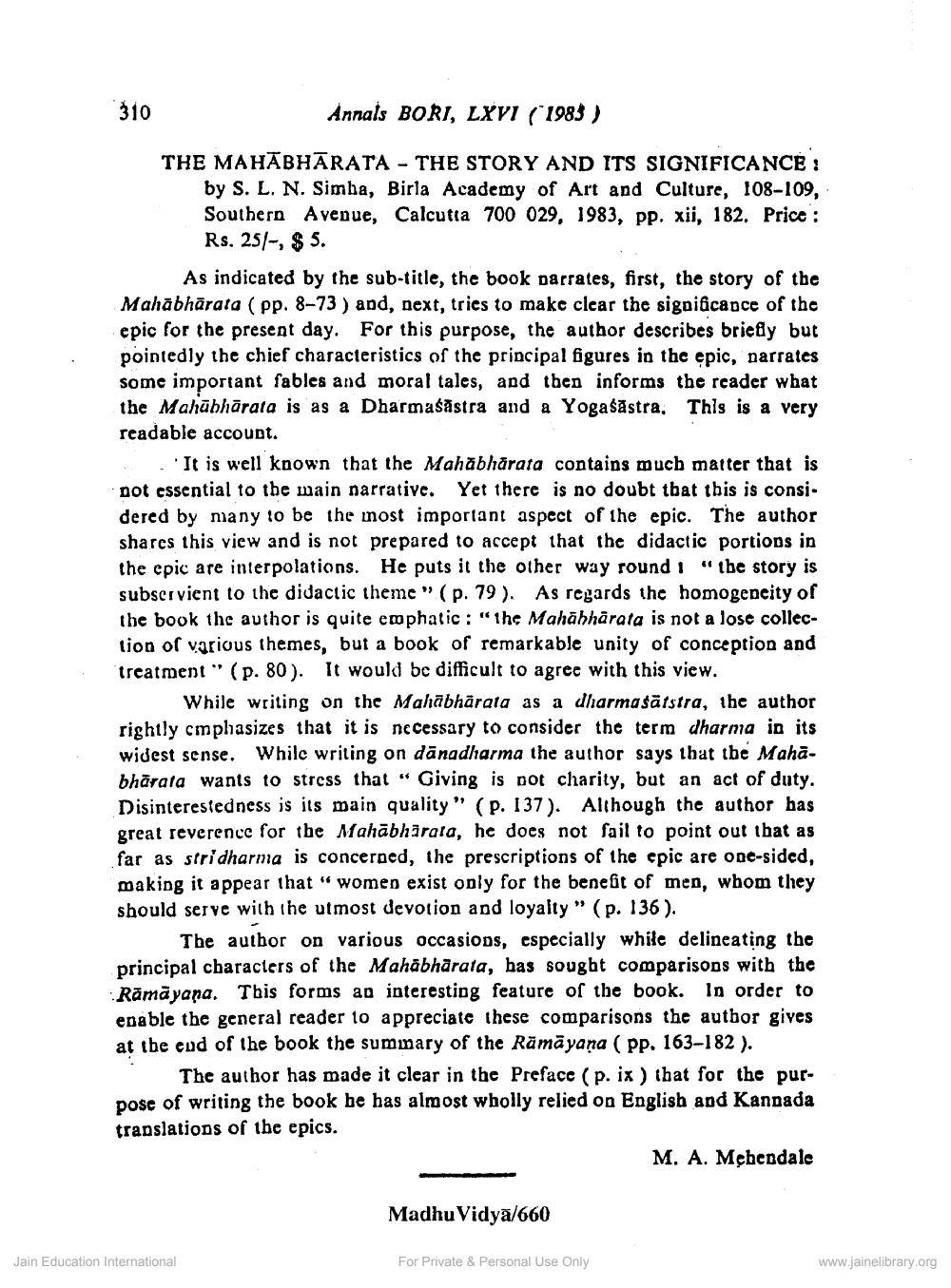________________
310
Annals BORI, LXVI (1983)
THE MAHĀBHĀRATA - THE STORY AND ITS SIGNIFICANCE :
by S. L. N. Simba, Birla Academy of Art and Culture, 108-109, Southern Avenue, Calcutta 700 029, 1983, pp. xii, 182. Price : Rs. 25/-, $ 5.
As indicated by the sub-title, the book parrates, first, the story of the Mahābhārata (pp. 8–73) and, next, trics to make clear the significance of the epic for the present day. For this purpose, the author describes briefly but pointedly the chief characteristics of the principal figures in the epic, narrates some important fables and moral tales, and then informs the reader what the Mahābhārata is as a Dharmaśāstra and a Yogaśāstra. This is a very readable account.
It is well known that the Mahābhārata contains mucb matter that is not essential to the main narrative. Yet there is no doubt that this is considered by many to be the inost important aspect of the epic. The author shares this view and is not prepared to accept that the didactic portions in the epic are interpolations. He puts it the other way round i "the story is subscrvient to the didactic theme" (p. 79). As regards the homogeneity of the book the author is quite emphatic : "the Mahābhārata is not a lose collection of various themes, but a book of remarkable unity of conception and treatment" (p. 80). It would be difficult to agree with this view.
While writing on the Mahabharata as a dharmaśārstra, the author rightly cmphasizes that it is necessary to consider the term dharma in its widest sense. While writing on dānadharma the author says that the Mahabhārata wants to stress that " Giving is not charity, but an act of duty. Disinterestedness is its main quality" (p. 137). Although the author has great reverence for the Mahābhārata, he does not fail to point out that as far as stridharma is concerned, the prescriptions of the epic are one-sided, making it appear that “women exist only for the benefit of men, whom they should serve with ihe utmost devotion and loyalty" (p. 136).
The author on various occasions, especially while delineating the principal characters of the Mahabharata, bas sought comparisons with the Rāmāyana. This forms an interesting feature of the book. In order to enable the general reader to appreciate these comparisons the autbor gives at tbe end of the book the suminary of the Rāmāyana (pp. 163-182 ).
The author has made it clear in the Preface (p.ix) that for the purpose of writing the book he has almost wholly relied on English and Kannada translations of the epics.
M. A. Mehendale
Madhu Vidyā/660
Jain Education International
For Private & Personal Use Only
www.jainelibrary.org




